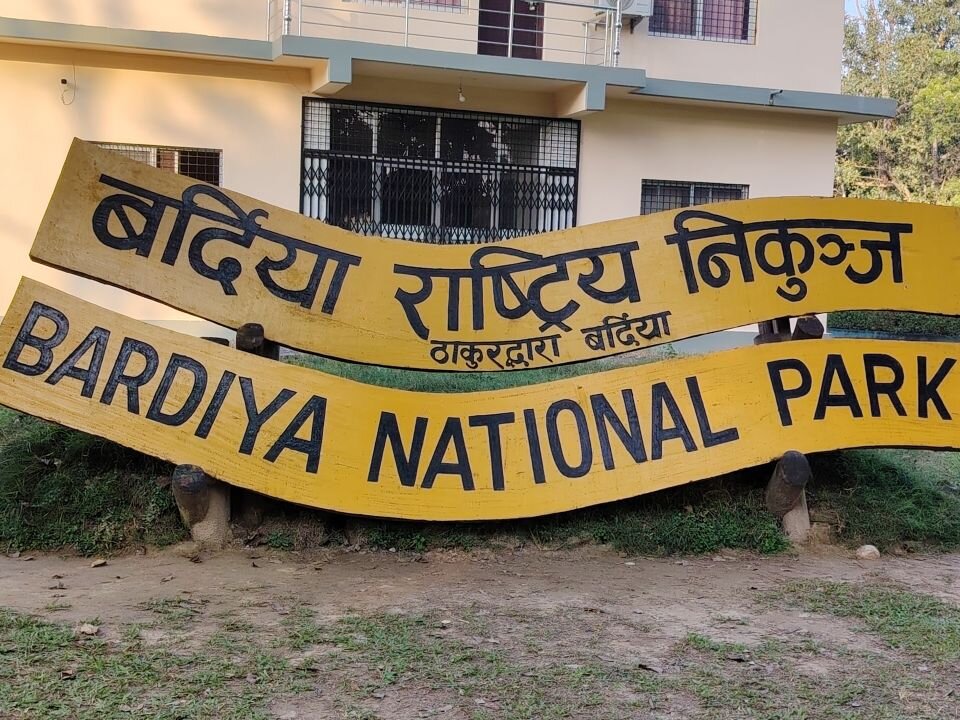Premium Only Content

Bardiya National Park
Bardiya National Park, situated in the western Terai region of Nepal, is one of the country’s most extensive and ecologically diverse protected areas. Covering an area of approximately 968 square kilometers, the park lies in Bardiya District of Lumbini Province and was officially established in 1988. Before its designation as a national park, the area was a royal hunting reserve known as the Bardiya Wildlife Reserve, which was created in 1976. Its transformation into a national park marked a significant milestone in Nepal’s efforts to conserve the rich biodiversity of the lowland Terai ecosystem.
The park is bordered by the Karnali River to the west, while the Babai River flows through its core, creating a mosaic of habitats that support a wide variety of flora and fauna. The landscape is dominated by dense sal (Shorea robusta) forests, interspersed with grasslands, riverine forests, and wetlands. This combination of habitats provides a refuge for some of the most endangered wildlife species in Asia. Bardiya is particularly famous for its population of Royal Bengal tigers, one-horned rhinoceroses, Asian elephants, gharial crocodiles, and Gangetic dolphins. It also shelters more than 400 species of birds, including the great hornbill, lesser adjutant stork, and bengal florican.
In addition to its ecological importance, Bardiya National Park holds significant cultural and social value. The area surrounding the park is home to the Tharu community, an indigenous ethnic group known for their unique traditions, dances, and harmonious relationship with nature. Their traditional lifestyle and knowledge systems contribute to sustainable resource use and help maintain the ecological balance of the region.
Bardiya offers rich opportunities for eco-tourism and wildlife observation, with jungle safaris, rafting on the Karnali River, and birdwatching among the most popular activities. Visitors may also encounter species such as spotted deer, wild boar, swamp deer, blue bull, and various species of monkeys. Despite its natural beauty and abundance of wildlife, Bardiya remains less commercialized than Chitwan National Park, giving visitors a more tranquil and authentic wilderness experience.
Today, Bardiya National Park stands as a symbol of Nepal’s commitment to biodiversity conservation and sustainable development. Through continued efforts in anti-poaching, community involvement, and habitat restoration, the park not only protects rare species but also supports the livelihoods and cultural heritage of local people. It remains a vital part of Nepal’s natural heritage — a sanctuary of life, culture, and beauty where the rhythm of the wild still beats strong.
-
 2:19:30
2:19:30
Side Scrollers Podcast
16 hours agoAngry Joe’s TDS/Halo Meltdown + Console War is OVER + Twitch Staff FIRED + More | Side Scrollers
63.8K14 -
 19:23
19:23
Nikko Ortiz
2 days agoRealistic Halloween Horror Movie Deaths
17.2K11 -
 18:09
18:09
The Pascal Show
7 hours agoHE'S PANICKING?! FBI Director Kash Patel Shuts Down Investigation Into Charlie Kirk Assassination
341 -
 34:55
34:55
BlabberingCollector
1 day agoHBO Set Leaks, Audible AudioBooks Paves New Harry Potter Future, & More! | Wizarding World Roundup
92 -
 LIVE
LIVE
Lofi Girl
3 years agolofi hip hop radio 📚 - beats to relax/study to
138 watching -
 25:03
25:03
GritsGG
12 hours agoHow to Obtain Warzone VICTORY From a TREE! Casual Solo Gameplay!
30 -
 2:48:05
2:48:05
FreshandFit
8 hours agoGhetto Fake Russian Disrespected The Entire Panel & THIS Happened...
211K113 -
 1:27:57
1:27:57
Tucker Carlson
5 hours agoTucker and Col. MacGregor Warn How Neocons Are Exploiting the Drug Crisis to Drag America Into War
24.7K71 -
 2:08:50
2:08:50
Badlands Media
10 hours agoDevolution Power Hour Ep. 402: Arctic Frost, Trump’s Third Term & The G2 Showdown
81.6K54 -
 2:05:48
2:05:48
Inverted World Live
9 hours agoUFO Seen Over Tokyo During Trump Visit | Ep. 132
63K18